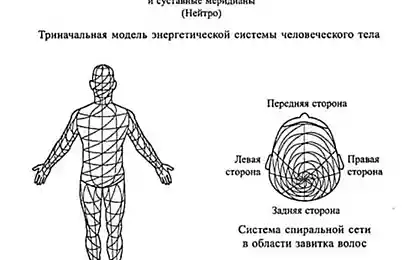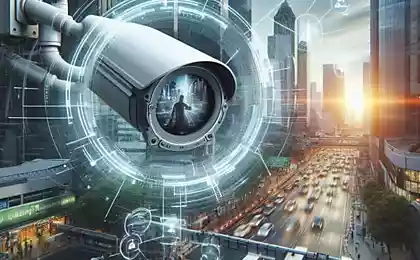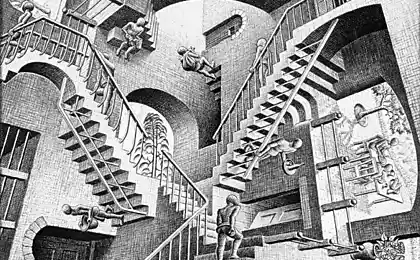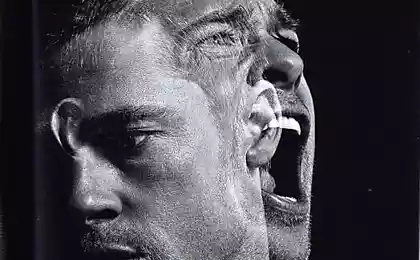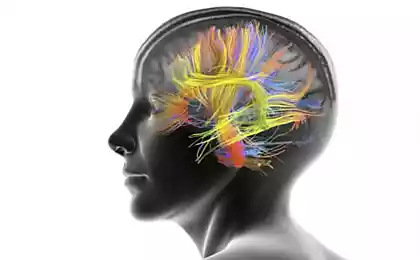285
The Observer Effect: How Video Cameras Affect Drivers

Modern Road Surveillance Systems Are Changing Driver Behavior
Each of us is familiar with the situation: seeing a camera on the road or a patrol car, even the most desperate rusher instinctively slows down and becomes an exemplary participant in the movement. It's not an accident or a coincidence. Behind this phenomenon is a powerful psychological mechanism, the observer effect, which fundamentally changes our behavior when we know we are under observation.
Modern neuroscience and behavioral psychology reveal surprising details about how the human brain responds to surveillance and what changes occur in our driving behavior when we know that every action we take is recorded. This knowledge can be used not only to understand human nature, but also to create a safer road environment.
According to the World Health Organization, about 1.35 million people die on the world’s roads every year. The introduction of modern surveillance systems reduces the number of fatalities by 15-30% depending on the region and the density of camera coverage.
Scientific basis of the observer effect among drivers
The classic definition of the observer effect in social psychology is related to the phenomenon where the presence of others reduces the likelihood of assisting a person in an emergency due to a blurring of responsibility. However, in the context of behavior on the road, we are talking about a slightly different aspect – the effect of social control, when the presence of an observer (a person or a camera) forces us to follow rules and demonstrate socially approved behavior.
Research by Stanford University neuroscientists shows that when a person is aware that they are being watched, the prefrontal cortex, the region responsible for self-control and decision-making, is activated. Additionally, there is a release of neurotransmitters that affect behavior:
- Increased levels of norepinephrine, which increases alertness and concentration
- The system of mirror neurons is activated, which helps us to “mirror” the socially acceptable behavior expected of us.
- Cognitive mechanisms for assessing the risks and consequences of disorders are launched
When a driver notices a security camera or other element of control, the following changes occur:
- Speed reduction: an average of 5-15 km / h, even without a real risk of fine
- Increased distance: Drivers automatically increase the safe distance to the vehicle ahead by 15-20%.
- Reducing the frequency of adjustments: The number of changes from row to row is reduced by about 30%
- Increased attention: The duration of fixation of the gaze on road signs and markings increases by 1.5-2 times
Interestingly, the observer effect works even when the driver only assumes surveillance. A study by the London School of Economics found that installing dummy surveillance cameras reduced the number of violations by 18% compared to control areas without visible surveillance elements.

Comparison of driver reactions under and without observation
Psychological mechanisms underlying the effect
Behind the influence of video cameras on the behavior of drivers are several fundamental psychological mechanisms:
1. Social Approval and Reputation
Evolutionarily man is determined to care about his reputation in society. Cameras are the eyes of society that can document our behavior. We instinctively strive to show our best side, which is reflected in more careful driving.
2. Fear of punishment
The obvious factor that compels us to follow the rules is the awareness of the inevitability of punishment. Modern systems of automatic fixation of violations create a feeling that a violation will necessarily be noticed and will entail negative consequences.
3. Increased awareness
One of the most interesting consequences is that the cameras force drivers to exit the “autopilot”. Behavioral psychology professor Dan Ariely notes that the awareness of observation shifts us from unconscious driving to conscious control of our actions.
“When a person knows that they are being watched, the area of the brain that is responsible for self-control and social compliance is activated. It's not just fear of punishment, it's actualization of our social identity as a responsible citizen. ?
Dan Ariely, Professor of Psychology and Behavioral Economics
Practical application of the observer effect to improve safety
Understanding the psychological mechanisms of the observer effect opens up broad prospects for a safer road environment. Here are the most effective strategies for using this effect:
Strategic placement of cameras and visual reminders
Studies show that the greatest effect is achieved when placing surveillance cameras in the following areas:
- In front of potentially dangerous sections of the road (sharp turns, narrowing)
- Where statistically the highest number of violations occur
- In school areas and places with high pedestrian traffic
- In areas with limited visibility, where drivers often overestimate their capabilities
Innovative solutions to enhance the observer effect
Modern technologies offer a number of innovative solutions that enhance the observer effect:
- Intelligent traffic lights with feedback Systems that show drivers that their behavior is being analyzed (for example, a scoreboard with a registration number and a message “Thank you for speeding”)
- Mobile applications with gemification Solutions that track driving style and encourage safe driving behavior through rewards
- Social integration Systems that create a sense of social observation (e.g., anonymous driving style messages available to other road users)
- Adaptive systems in cars Technology that tracks the driver’s condition and reminds them that their behavior is being recorded
Recommendations for individual application of the observer effect
Interestingly, we can consciously use the observer effect to improve our own driving behavior:
- Self-observation practices Installation of a DVR with cabin recording function can significantly increase self-control
- Public obligations An announcement to your loved ones about the intention to comply with traffic rules creates the effect of social surveillance
- Visual reminders - placement in the cabin of the car elements reminding of safety
- Use of telematics insurance systemswho analyze driving style and provide discounts for safe behaviour

Modern systems for monitoring the behavior of the driver inside the car
Ethical aspects of using the observer effect
The introduction of observer-based systems raises a number of ethical issues to consider:
- Balance between security and privacy Where is the limit of acceptable observation?
- The Risk of Creating a Total Control Society How to prevent misuse of data on the movement of citizens
- The problem of external motivation Will constant observation lead to atrophy of intrinsic motivation to follow the rules?
- Justice issues How to ensure equal treatment for different drivers
Conclusion: from control to self-control
The observer effect is a powerful tool for improving road safety. However, its most valuable aspect is not so much the direct control of violations as the formation of a new driving culture.
An ideal road safety system is one in which external controls gradually form stable patterns of safe behaviour that persist even in the absence of surveillance. In this context, cameras and monitoring systems are not so much tools of punishment as elements of an educational environment that teaches us to drive more responsibly.
The observer effect reveals the deep foundations of our social behavior and shows that road safety is the result of a complex interplay of technology, psychology and culture. Understanding and properly using this effect can be the key to creating a truly safe road environment in which everyone feels responsible not only to the control system, but also to themselves and others.
Glossary of terms
The Observer Effect (Observer Effect)
A psychological phenomenon in which a person's behavior changes when they realize they are being watched. In the context of road traffic, it manifests itself as a tendency for drivers to exhibit safer and more regulatory behaviour with cameras or other controls.
Prefrontal cortex
The area of the brain located in the front of the frontal lobes of the cortex of the large hemispheres. Responsible for planning complex cognitive behaviors, decision-making, personality expression, moderate social behavior and self-control.
Telematics
The field of information technology covering telecommunications, automotive technology and computing. In the context of driving, systems that collect and analyze driving style data to assess risk and driver behavior.
Gemification (Gamification)
Application of game design elements and game principles in non-game contexts. In the field of road safety, it is used to motivate drivers to follow the rules through a system of awards, achievements and competitive elements.
Systems for automatic recording of violations
Complexes of technical means that, without human participation, detect violations of traffic rules, document them and transmit information to data centers for subsequent decision-making on the imposition of an administrative penalty.
Mirror neurons
A special class of nerve cells that are activated both when performing a certain action and when observing the performance of this action by others. They play an important role in learning through observation and empathy.
norepinephrine
A neurotransmitter and hormone produced by the adrenal glands and some neurons of the central nervous system. Participates in the regulation of stress reactions, increases alertness and concentration.
